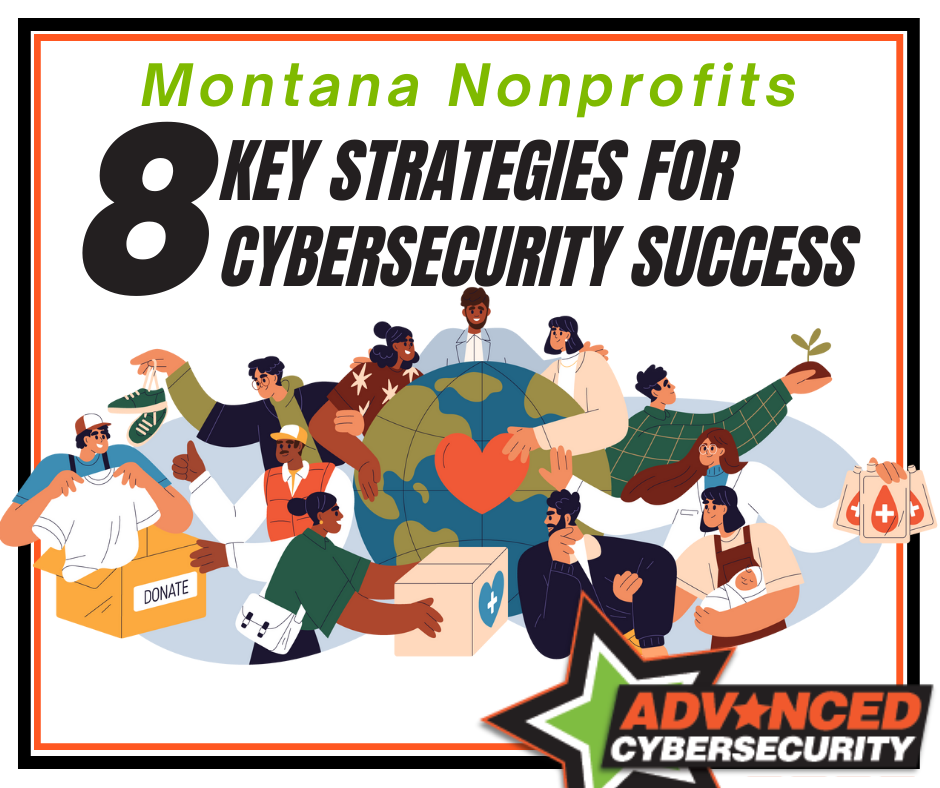
In today’s digital age, cybersecurity is of paramount importance for organizations of all sizes, including nonprofits. Montana nonprofits, like their counterparts elsewhere, are increasingly vulnerable to cyber threats ranging from data breaches to ransomware attacks. Protecting sensitive information, maintaining donor trust, and ensuring operational continuity are critical priorities. Therefore, implementing robust cybersecurity practices is essential for safeguarding the interests and integrity of Montana nonprofits.
Understanding the Threat Landscape
Before delving into cybersecurity best practices, it’s essential to grasp the evolving threat landscape faced by Montana nonprofits. Cybercriminals often target organizations with valuable data or weak security defenses. Nonprofits, despite their altruistic missions, are not immune to such threats. In fact, they can be even more susceptible due to limited resources and expertise dedicated to cybersecurity.
Common Threats Facing Nonprofits Include:
1. Phishing Attacks: Deceptive emails or messages designed to trick users into divulging sensitive information or installing malware.
2. Ransomware: Malicious software that encrypts files or systems, demanding payment for their release.
3. Data Breaches: Unauthorized access to sensitive data, leading to its theft or exposure.
4. Social Engineering: Manipulating individuals to gain unauthorized access to systems or information.
5. Malware: Software designed to disrupt, damage, or gain unauthorized access to computer systems.
Now, let’s explore the best cybersecurity practices that Montana nonprofits can adopt to mitigate these threats effectively.
1. Educate Staff and Volunteers:
One of the most critical aspects of cybersecurity is ensuring that everyone in the organization understands the risks and their role in preventing them. Conduct regular training sessions to educate staff and volunteers about cybersecurity best practices. These sessions should cover topics such as identifying phishing attempts, creating strong passwords, and recognizing social engineering tactics. Additionally, provide guidelines for securely handling sensitive information and using organization-approved devices and software.
2. Implement Strong Password Policies:
Weak passwords are one of the most common vulnerabilities exploited by cybercriminals. Encourage staff and volunteers to create strong, unique passwords for their accounts and systems. Implement password policies that require a combination of uppercase and lowercase letters, numbers, and special characters. Consider using password management tools to securely store and manage passwords across the organization. Additionally, enforce regular password changes and multi-factor authentication wherever possible to add an extra layer of security.
3. Keep Software and Systems Updated:
Regularly updating software, operating systems, and security patches is essential for protecting against known vulnerabilities. Enable automatic updates wherever possible to ensure that systems are always running the latest, most secure versions of software. This includes not only computers and servers but also mobile devices and other connected devices used within the organization. Implement a formal patch management process to track and prioritize updates based on their criticality and potential impact on operations.
4. Secure Data and Devices:
Protecting sensitive data should be a top priority for Montana nonprofits. Encrypt data both in transit and at rest to prevent unauthorized access or interception. Use encryption protocols such as SSL/TLS for web communications and encryption tools for storing sensitive files and documents. Implement access controls to restrict access to confidential information only to authorized personnel. Additionally, ensure that all devices used by staff and volunteers are secured with strong passwords or biometric authentication and enable remote wipe capabilities in case of loss or theft.
5. Backup Data Regularly:
Data loss can be catastrophic for nonprofits, potentially jeopardizing operations and donor trust. Implement a robust data backup strategy to ensure that critical information is protected against accidental deletion, corruption, or ransomware attacks. Regularly backup data to secure, offsite locations, such as cloud storage or dedicated backup servers. Test backups regularly to verify their integrity and restore capabilities. Consider implementing a combination of full and incremental backups to minimize data loss and recovery time objectives.
6. Develop an Incident Response Plan:
Despite best efforts, security incidents may still occur. Having a well-defined incident response plan in place can help minimize the impact and facilitate a swift recovery. Establish clear roles and responsibilities for responding to security incidents, including who to contact and how to escalate issues. Document step-by-step procedures for assessing, containing, and mitigating security breaches. Conduct regular tabletop exercises and simulations to test the effectiveness of the incident response plan and identify areas for improvement.
7. Partner with Trusted Vendors and Service Providers:
Choose vendors and service providers carefully, particularly those handling sensitive data or providing essential IT services. Conduct thorough due diligence to ensure that vendors adhere to industry best practices and comply with relevant regulations such as GDPR or HIPAA. Review contracts and service level agreements (SLAs) to clarify responsibilities, security obligations, and liability in case of breaches. Maintain open communication channels with vendors and regularly review their security practices and performance.
8. Foster a Culture of Security:
Finally, cybersecurity is not just a technical issue—it’s a cultural one. Encourage a culture of security within the organization where everyone feels responsible for protecting sensitive information and maintaining the integrity of systems and data. Promote open communication and transparency regarding cybersecurity risks and incidents. Reward and recognize staff and volunteers who demonstrate exemplary security practices. By fostering a culture of security, Montana nonprofits can significantly enhance their resilience against cyber threats.
In an increasingly digital world, cybersecurity is a fundamental concern for Montana nonprofits. By implementing robust cybersecurity practices and fostering a culture of security, organizations can effectively mitigate risks and safeguard their operations, reputation, and stakeholders’ trust. While no system is entirely immune to cyber threats, proactive measures can significantly reduce the likelihood and impact of security incidents. By staying vigilant, informed, and prepared, Montana nonprofits can navigate the digital landscape with confidence and resilience.
Let's Work Together!
Schedule a discovery meeting with one of our Advance Cybersecurity Experts to discuss how First Call can help you start YOUR Security Transformation!
LET'S WORK TOGETHER!
Schedule a discovery meeting with one of our Advanced Cybersecurity Experts to discuss how First Call can help you start YOUR Security Transformation!

